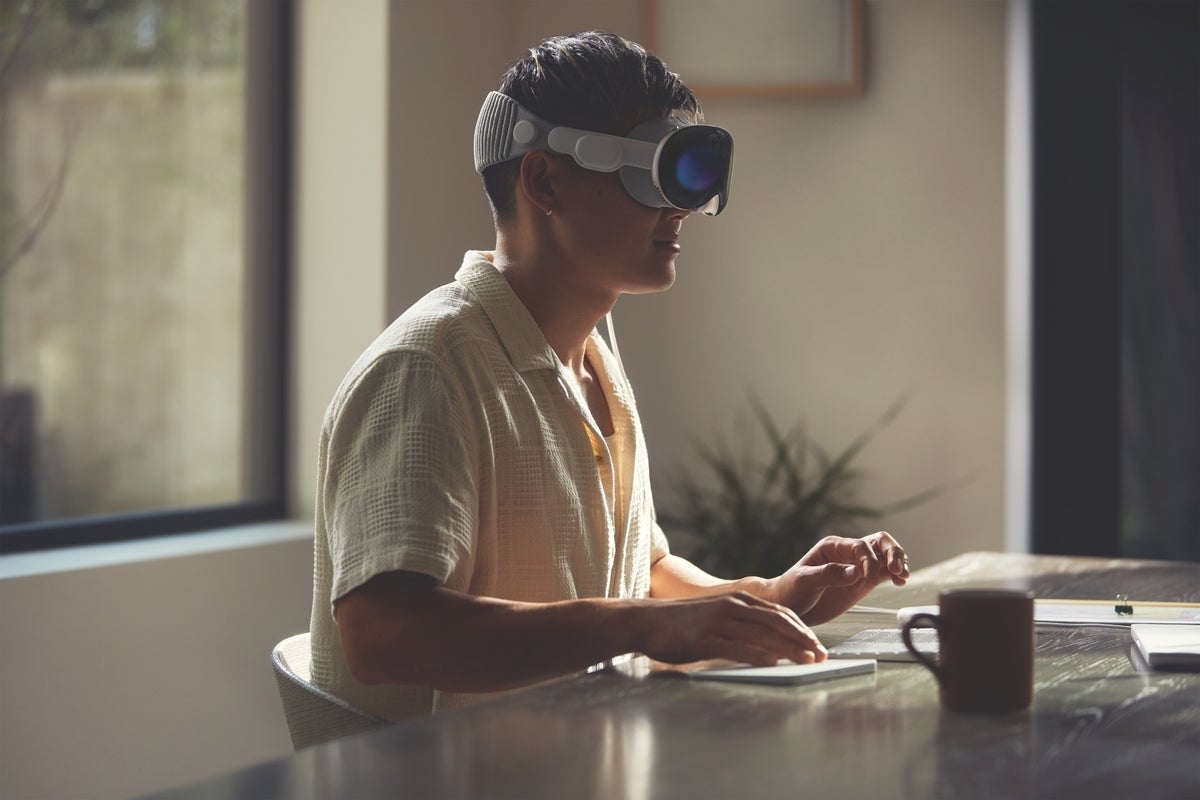Apple’s Vision Pro enters a troubled market.
I say troubled because people have so far largely rejected head-mounted devices. Though before the iPod arrived, the market didn’t care much for digital music players, and before the iPhone, people didn’t care much for screen-based phones. So this should be familiar territory for Apple.
The iPod and the iPhone were both Steve Jobs-launched products — and after Jobs, you must stretch to find similar success, let alone a break-out product like the iPod and iPhone. The iPad seemed to lose momentum after Jobs died in 2011, and the Apple Watch (which broke Jobs’ naming convention but was a very good device) didn’t quite match those earlier iconic devices. (The internal decision to marry the Apple Watch to only the iPhone severely limited its potential market.)
This week, Apple unveiled the Vision Pro, which is better positioned for success than anything Meta did. It’s superior to any other consumer-focused headset and matches up on specs to some of the better tethered headsets without the computer tether. It seems to be positioned more like a head-mounted computer than pure virtual or augmented reality AR/VR).
But it still must overcome a problem that has plagued this class of product from the start. And no, I’m not talking about the $3,499 price.
The problem with headsets
People don’t seem to like things that you attach to your body to give you extra capability, and we really don’t like things that go on our faces. Recall the rebellion against mask mandates during the COVID-19 pandemic or the 3D TV wave that failed because people didn’t like wearing glasses, even if they cost as little as $15. We dislike putting things on our faces so much that we will have expensive eye surgery or wear uncomfortable contact lenses to avoid it.
The first time I tried out a head-mounted display was in the early 2000s, when Sony loaned me a pair of $20,000 display glasses designed for the medical market. They had some of the capabilities of the Apple Vision Pro and I enjoyed wearing them, but they never caught on and Sony eventually discontinued them.
Apple’s effort is arguably one of the most attractive iterations; it’s in line with Magic Leap’s older headset, but sleeker and less busy looking. Even so, Apple will need to invest in marketing to get people comfortable wearing the Vision Pro. While Apple clearly has the money to do this, it’s been over a decade since it has pushed a big marketing effort at scale; I have doubts it will succeed here.
Still, there are several compelling aspects to the Vision Pro; it appears far better built and conceived than were the first iPods and iPhones.
The potential benefits of Vision Pro
If a new product offers an initial benefit (as the iPod did) and can provide one thing a user needs that nothing else can provide, it can be successful.
For instance, with the embedded cameras and display, you can see better in low light situations, such as when outside at night. You should be able to see things you might otherwise miss, like deer approaching the road or thermal differences in pavement that might be black ice.
For productivity, today’s laptops, tablets, and smartphones are all screen limited. I use a 49-in. Dell monitor at home (full disclosure: Dell is a client) and I run into major issues without that screen real estate when I work while traveling or remotely. Apple’s head-mounted computer could be a godsend for me, but only if it runs the apps I need to run (such Office 365), which it might do by the time it is available in 2024.
As with other head-mounted devices, this could easily work with visual media for entertainment or training. And while it only has a two-hour battery pack, I expect it will have additional battery and plug-in options at launch, allowing for more extended use.
Other possibilities include vision exercises designed to reduce vision decline, meditation apps to help you wind down on a plane or before sleep, and video conferencing (which the company demonstrated during its announcement). Note: Apple accomplished something interesting by allowing you to create avatars with realistic eyes by using internal eye tracking. That may help people adjust to metaverse conferencing, something that’s not been getting much traction of late.
One obvious shortcoming is that Apple isn’t very far along with generative AI, which could be a game changer for this device. I’d expect Apple to buy into generative AI shortly, much as it bought a headset company to help develop this product.
Finally, by launching the device months ahead of availability — Apple did the same with the iPhone — the company has time to get developers excited. (They may have to pay some of them to ensure there is a Vision Pro ecosystem in place when the device is launched. Without that ecosystem, it would certainly fail.)
The future of computing?
I believe a device like the Vision Pro is the future of personal computing and could eventually replace both the PC and the smartphone. Apple isn’t likely to see it that way. Instead, it’s more likely to pitch Vision Pro as an additive product, something you get to complement an iPhone or Mac, not replace them.
This approach does open the door for another vendor to slipstream Apple’s effort and steal the market from them. Apple didn’t use this approach with the iPod (which worked with Windows PCs and replaced the Sony Walkman), or the iPhone which effectively replaced the iPod.
In short, Apple’s current approach could leave it vulnerable. But the company certainly will make the AR/VR category interesting. I expect, whether it’s Apple or another company, we will have a viable and successful head-mounted display in market within a few short years.
Copyright © 2023 IDG Communications, Inc.
This story originally appeared on Computerworld

